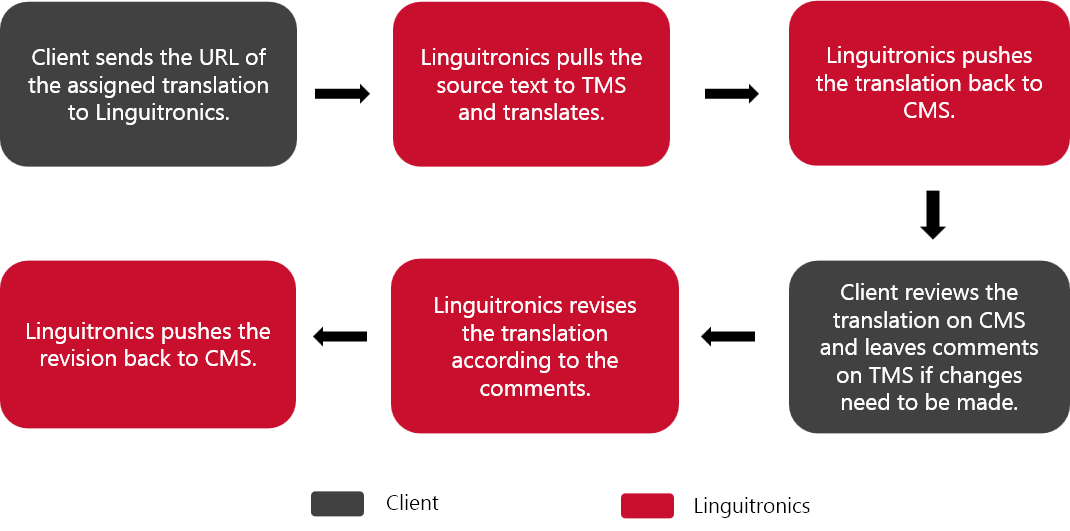Transcreation and Why It Matters to Your Business Capabilities
2025.10.02In a world of increasing interconnectedness, it takes a little extra effort to expand into a secondary language. Skimping on translation efforts is a huge no-no, particularly if you’re in a business environment.
Take Braniff Airlines’ 1987 advertisement, for example. With its new all-leather seats, Braniff was excited to tell customers that they could now fly “en cuero,” which translates directly from “in leather.” However, they overlooked one important thing. In Spanish, “en cueros” is a slang term for “naked.” In other words, Braniff was telling passengers that they could fly without their clothes on.
Needless to say, this ad campaign was not received well. The company was forced to issue a public apology, and Braniff went bankrupt just two years later.
On the other hand, good translations can also greatly help marketing efforts. One example is the Paw-xing Gloves in the game Bravely Default II.
In the original Japanese text, the gloves were referred to as “Nyackle,” from the Japanese onomatopoeia “nya” and the English word “knuckle.” Since the onomatopoeia for a cat’s sound in English is “meow” and not “nya,” the term “Nyackle” wouldn’t make sense in the English version.
So, instead, they went with “Paw-xing,” which comes from the words “Paw” and “boxing.” Unlike Braniff’s poorly translated slogan, this was a big hit among fans.
These examples show that even the slightest details can make or break a global marketing campaign. This is where transcreation comes in. In this article, we’ll discuss everything you need to know about transcreation and how it can contribute to your business growth.

What Is Transcreation?
Transcreation is creative translation that adapts content from one language to another while preserving its original intent, style, tone, and emotional impact. Think of it as “reimagining” your message for a new audience—prioritizing brand voice and emotional connection over literal word‑for‑word conversion.
Key Aspects of Transcreation
- Focus on the Overall Message: It conveys the core meaning, feeling, and purpose of the original content rather than each individual word.
- Cultural Adaptation: It adjusts for local customs, idioms, and sensitivities to ensure the message resonates and avoids misinterpretation.
- Creative Re‑interpretation: It may rewrite or reinvent headlines, slogans, or copy to suit the target market while keeping the essence intact.
- Emotional Impact: It aims to evoke the same response in the new audience as the original, even if the wording changes.
- Beyond Simple Translation: Unlike standard translation, transcreation places equal weight on cultural and emotional effectiveness.
When Is Transcreation Used?
Transcreation is essential whenever you need an emotional or cultural connection in your content, especially for:
- Advertising slogans and taglines
- Marketing campaigns
- Brand messages and positioning
- Product names
- Literary or creative works
In short, transcreation blends translation and creative adaptation to make sure your message lands with the same power and purpose in any language.
Transcreation vs. Translation: Which Is Which?
Choosing the right approach depends on your goals—precision or persuasion. Here’s how they differ in four key areas:
1. Focus & Purpose
Translation zeroes in on literal accuracy. Translators work to mirror the original text word‑for‑word, while ensuring readability for the target audience, making it ideal for contracts, technical manuals, or any document where every term matters.
Transcreation aims for emotional and cultural impact. Transcreators take your core message and reshape it—adjusting humor, idioms, or even visuals—to spark the same reaction in a new market that the original did at home.
2. Who Does the Work
Translators are language specialists fluent in both source and target languages, with deep subject‑matter knowledge. They deliver faithful conversions, ensuring no meaning is lost.
Transcreators combine linguistic skill with copywriting and marketing savvy. They read your brand brief, brainstorm creative angles, and craft fresh headlines or slogans that feel native to the audience.
3. Workflow & Inputs
- Translation
- Start: Translator receives the source text.
- Process: Work directly on the text, following style guides or glossaries if provided.
- Output: A precise, readable version in the target language.
- Transcreation
- Start: Team reviews source text plus a creative brief (goals, tone, visuals, audience profile).
- Process: Ideation sessions to adapt copy, sometimes reworking imagery or layout. Multiple creative drafts refine emotional tone.
- Output: A fully adapted campaign piece—tagline, ad, or video script—that resonates culturally and emotionally.
4. Cost & Timeline
Translation is usually priced per word and follows a predictable schedule: more words equal more time and cost. It’s straightforward for budgeting and planning.
Transcreation is scoped project‑wise or hourly, reflecting the creative effort—brief development, concepting, multiple drafts. It can take longer but delivers a message that truly connects with your new market.
To conclude, go with Translation when accuracy and cost predictability matter most—legal documents, technical guides, or any content where you can’t afford a stray word.
Instead, opt for Transcreation when you need to win hearts—marketing campaigns, brand slogans, or product launches that must feel authentic and engaging to a foreign audience.

Transcreation Examples
Here are some transcreation examples to illustrate further the necessity of this discipline when it comes to global business development.
- Mcdonald’s. This beloved franchise’s motto “I’m lovin’ it” is translated to “我就喜歡” in Chinese, which says “I just like it” if you make a literal back-translation. Instead of a direct translation, McDonald’s went for a transcreation that would be more accurate to how Chinese-speaking people talk and that maintains the same sense of spontaneity and liberty as the English version.
- Haribo. This German sweets maker brand’s motto in its native tongue is “Haribo macht Kinder froh, und Erwachsene ebenso," which literally translates to “Haribo makes children happy, and adults too.” Although it works well in German, the direct Italian translation was deemed too long and complicated. So for their Italian campaign, they went with the catchy “Haribo è la bontà che si gusta ad ogni età (Haribo is the goodness that can be tasted at any age)," which turned out to be a successful rhyming pitch to the Italian consumers.
- Apple. This electronics giant’s slogan for the iPhone 13 in the US is “Oh. So. Pro.” which was transcreated to “very strong” in simplified Chinese (強得很), “very pro” in the Hong Kong market (非常。 Pro), and “nothing but pro” in traditional Chinese for Taiwan market (就。很。Pro。). The Taiwanese audience was amused by the “Taiwaneseness" of the slogan. Social media managers of other brands immediately imitated the slogan in their posts. It became a widely-spread meme in a few hours. This is another good example of an effective transcreation work that makes your audience distribute the content for you.
What’s in a Transcreation Brief?
Now that you know how essential transcreation is for your business, you might be eager to avail of transcreation services. Before you can do that, though, you need to have a proper brief that will give your transcreation team the information they need to best create your message.
Here is some essential information that a transcreation brief should contain:
- Context. You need to detail what your content is all about, what the overall message is, and how you want it to be delivered.
- Legal requirements. It’s your responsibility to do the research for any legal requirements or compliance in the countries/regions that you’re targeting. If you’re not able to conduct such research in person, seek advice from transcreators who are familiar with local regulations.
- Target audience. What kind of audience are you trying to reach? What does the customer segment look like? And what approaches can you take to deliver your messages in a relevant way?
- Multidimensional Quality Metrics. Also known as MQM, it is a translation quality assessment framework that enables users to customize their own metrics for quality evaluation. This depends on which aspects you prioritize when judging the quality of a content piece, whether that’s accuracy, fluency, veracity, etc.
- Reference materials. Include your inspiration and source information, so you know that you’re on the same page with your team.
- SEO keyword. Incorporate SEO details like keywords in the brief as well. Doing this can ensure that your transcreation output gets the highest possible visibility on the search result page.
- Task details. This includes the deadlines, disclaimers, an excerpt from the brand style guide, and any other notes you might have for the task.
By adding these details to your transcreation brief, you can be sure that the final result will be an accurate and culturally sound piece of content. It will carry the persuasive powers that you want to be embodied in your marketing campaign.
Selecting the Right Transcreation Service Provider for Your Business
Now that you understand what transcreation is, your next step is to choose the right transcreation service provider that caters to your business needs.
Linguitronics is a premier language service provider that offers top-quality transcreation output for various content that you intend to distribute and push into a different, non-native audience.
From basic translation materials to complex transcreation content, we are dedicated to delivering the most impactful messages possible in your target languages while adhering to your needs, deadlines, and budget. Linguitronics also utilizes the latest quality assessment (QA) tools to ensure that words used are in compliance with local laws and regulations, customs, and taboos. By avoiding these pitfalls, we help your brand to launch products and release content without a hitch.
Sounds like what you need to drive business growth? Contact us now!
Contact Us Now
More Insights

Managing Multiple Languages like a Super Admin: the Power of CMS and TMS

Why Translation Management? Going Beyond Language Conversion and Building a Holistic Approach—Risk Analysis

